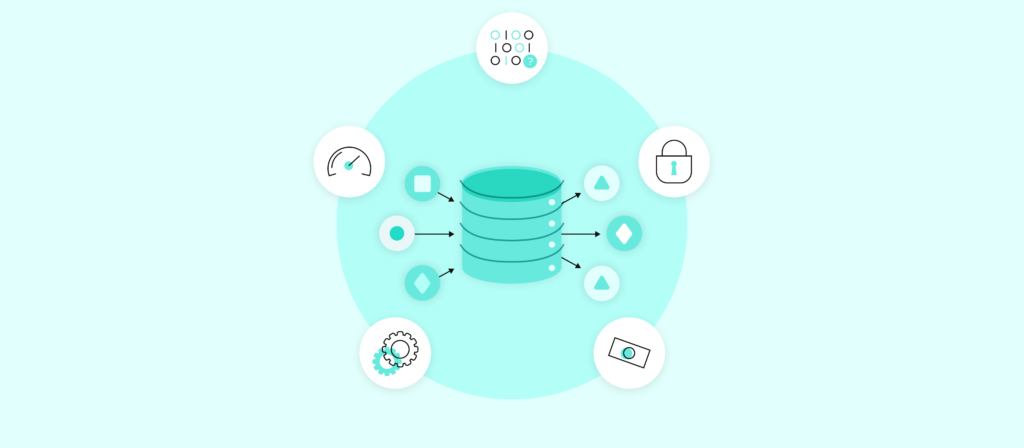Salesforce’s $8 billion purchase agreement for Informatica just kicked off a new era of uncertainty in the integration and data management market. While Salesforce promises grand plans, Gartner’s early take is clear: confusion now, risk later, and tough choices ahead for both Informatica and MuleSoft customers.
For Workato and our customers, this is a moment of clarity. As Salesforce works to rationalize overlapping products, navigate roadmap uncertainty, and manage forced migrations, Workato remains modern, independent, and innovation-led Leader in the orchestration space.
Why did Salesforce buy Informatica?
Buying a better platform? Or building a walled garden.
Salesforce’s ambitions are broad. From CRM and Marketing Cloud to Agentforce, automation, and now data management, the company is attempting to control as much surface-area as possible within the enterprise. As this continues, customers are left navigating rising costs, overlapping products, and an increasingly closed ecosystem.
The Informatica acquisition is no different. The primary goal? Feed Salesforce Data Cloud and eventually Agentforce with more metadata, customer information, and integration capabilities. But as Gartner puts it, this creates “significant product overlaps” and raises long-term questions about Informatica’s independence.
What customers can expect:
- A redirection of Informatica’s innovation and R&D toward Salesforce-native use cases—not customer-led, multi-cloud strategies
- Accelerated PowerCenter deprecation, forcing customers into cloud migrations on compressed timelines
- Aggressive upsell and bundling tactics, as Salesforce shifts Informatica customers into enterprise license agreements (ELAs)
Details of the Salesforce Informatica Deal
- Deal Value: Valued at approximately $8B in cash ($25 per share); announced May 2025.
- Technology Integration: Informatica’s data integration, governance, catalog, and MDM capabilities will be embedded across the Salesforce platform.
- Stated Goal: Building a unified AI data foundation to drive automation, governance, and AI agents across the Salesforce ecosystem.
- Funding and Approval: Financed through cash and new debt; major Informatica shareholders have already consented.
- Expected Close Date: Early fiscal 2027, pending regulatory and shareholder approvals.
What This Means for Informatica Customers
Informatica’s value has historically come from its leadership in master data management (MDM), data quality, metadata management, and governance.
It’s unlikely that Salesforce is acquiring Informatica to invest in its MDM roadmap or improve data connectivity across 3rd-party platforms. Instead, Salesforce is acquiring Informatica to fuel Agentforce with data ingestion, quality, and metadata enrichment engines like CLAIRE. Gartner confirms this shift, noting that Salesforce is focused on “targeted integrations with SDC and Agentforce”—not extending Informatica’s standalone capabilities.
What this means in practice:
- Expect innovation to stall in Informatica’s core products as R&D shifts toward Salesforce-first integrations and use cases.
- Long-term viability as a standalone platform is in question. Informatica’s independence – and its value as a neutral enterprise-grade solution – is eroding.
- Aggressive upselling is coming. Customers should get clarity on future pricing and licensing before renewing anything. Salesforce has a well-documented playbook for bundling, expanding deal size, and locking customers into long-term ELA commitments.
What This Means for MuleSoft Customers
For MuleSoft users, this acquisition makes an already complicated story even harder to navigate. Salesforce now owns two iPaaS platforms – and the overlaps are real and consequential:
- Application and API integration, metadata, data quality, orchestration – all duplicated
- If consolidation happens, it could significantly impact product roadmaps, license models, and support
- Even if not, roadmap drift is likely. Salesforce may shift engineering to prioritize Informatica capabilities over MuleSoft’s, especially as Agentforce AI becomes a strategic focus
What We’ve Seen from Past Salesforce Acquisitions
Salesforce has a mixed record when it comes to large-scale M&A:
- Tableau, acquired for $15.7 billion in 2019, was initially left independent – but innovation slowed, restructuring/layoffs began, and features increasingly aligned to CRM use cases.
- Slack, acquired for $27.7 billion in 2021, was promised autonomy – but has since seen leadership exits and roadmap shifts.
- Heroku, once beloved by developers, now suffers from stagnation and declining investment.
These cases illustrate a common pattern: initial independence, followed by slow absorption into Salesforce’s core platform – and often, a loss of momentum.
Looking forward
Let’s be honest: Salesforce isn’t incentivized to create a more open, interoperable ecosystem. At Workato, we believe your integration and automation platform should give you more flexibility—not less. Our platform is designed for leaders who want real choice, rapid innovation, and seamless connectivity across their technology stack—whether that’s SAP, Salesforce, Microsoft, Snowflake, or beyond.
What sets Workato apart:
- Vendor Neutrality: Connect best-of-breed apps and data, wherever they live. Workato natively supports connectivity with on-premise, cloud, hybrid, and legacy systems without favoring a single ecosystem.
- Unified, Modular Platform: Workato delivers integration, API management, automation, and data orchestration within a single, extensible platform. No fragmented UI, no suite of bolt-on acquisitions—just central governance, consolidated monitoring, end-to-end logging, and enterprise-grade RBAC across all integration assets.
- Speed at Scale: Launch new automations in weeks, not months, with unmatched ease of use and pre-built recipes for even your most complex workflows.
- Continuous, Customer-Led Innovation: Workato’s product roadmap is shaped by direct customer feedback and focused innovation. With a unified runtime and decoupled platform architecture, new features and enhancements are delivered continuously—so you get immediate value without disruptive version upgrades, forced migrations, or months spent refactoring legacy integrations.
If others are building higher walls, we’re breaking them down—giving you the adaptability to respond to changing business needs and architect for tomorrow’s priorities, not just today’s requirements.
For Informatica and MuleSoft customers, this is a tipping point: shifting priorities, overlapping products, and forced bundling are already introducing new risks. Workato delivers clarity, resilience, and true architectural freedom—empowering you to build what your business needs next, on your terms and your timeline. The landscape is changing. With Workato, you stay in control.

Ready to learn more?
Integrate, automate, and eliminate bottlenecks with Workato. Our team of architecture experts is here to help.
